France
Paris
Welcome to
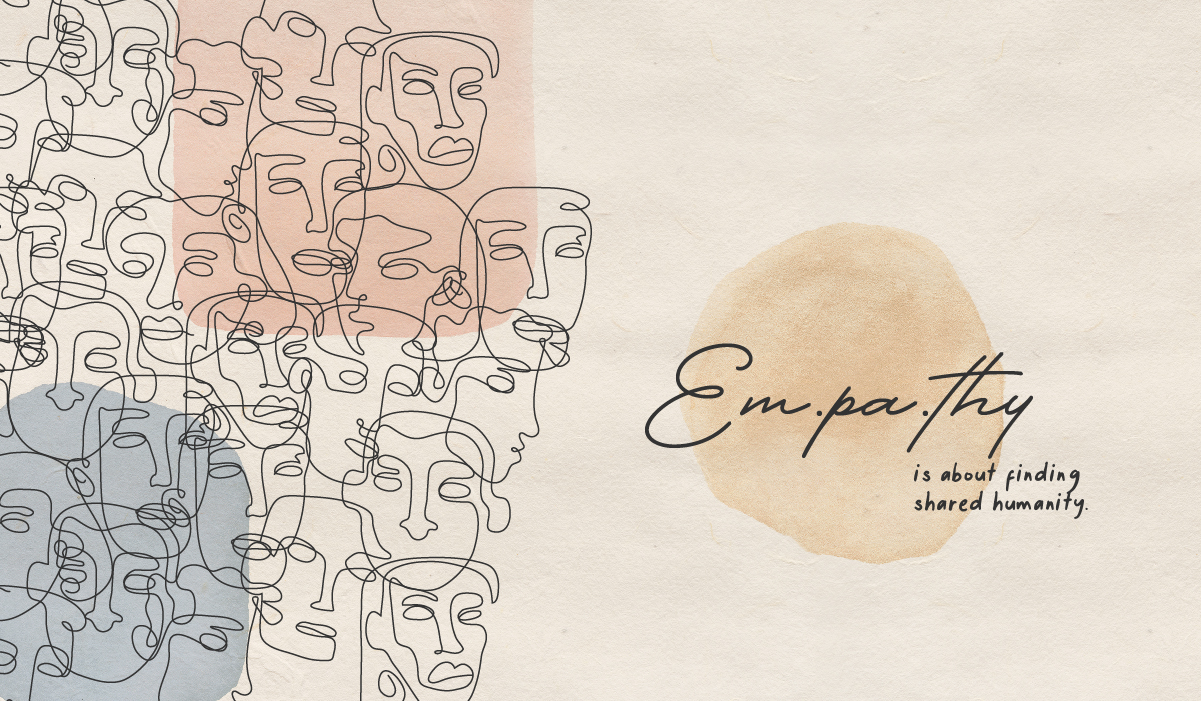
In the day-to-day life of big corporations, agencies or consulting companies it’s easy to forget the target consumer’s reality. Although consumers are on the core of everything that is done, thought and designed, oftentimes stakeholders know them through figures and reports, but rarely see them in flesh. It is a challenging task to make consumer insights known outside the CMI (Consumer & Market Insights) department and engage more of the company’s staff in the process of understanding the target consumer.
Today there is an increasing tendency to value big data and artificial intelligence – which we, at CBA B+G, totally support. However, we can’t forget the great value of building emotional and human ties throughout the research and innovation process, by using tools that promote an empathetic immersion in the lives of consumers.
But what exactly does empathy mean? According to the Australian philosopher Roman Krznaric, it’s about finding shared humanity. He believes that we are urgently in need of empathy to create the ‘social glue’ to hold our society together. From a business point of view, empathizing with consumers is not only ‘cool’; we believe it also leads to transforming, effective and positive results, in three different ways:
Storytelling is at the heart of any empathic process, and there are countless tools, non-digital, hybrid or completely virtual which engage the spectator in the story in a simple, touching and impactful way. Here are some tools and examples that can be applied to society and by brands.
A. Step into someone else’s shoes … literally
If empathy means to step into other people’s shoes, then why not literally do that? That is the proposal of the initiative called “A mile in my shoes” from the Australian National Maritime Museum, which invites visitors to wear shoes that belong to other (real!) people and listen to them telling parts of their stories. In São Paulo, the exhibition “Diálogo com o Tempo” (Dialogue with Time), hosted by Unibes Cultural, has created an immersion environment in the universe of old age, inspired by the same principle.
At CBA B+G, we have applied the same idea during an Innovation workshop held for Plenitude – a brand of disposable underwear, designed for people who suffer from incontinency. We have asked the participants to wear the underwear for three days, to put themselves in the consumers’ shoes and better understand their needs.
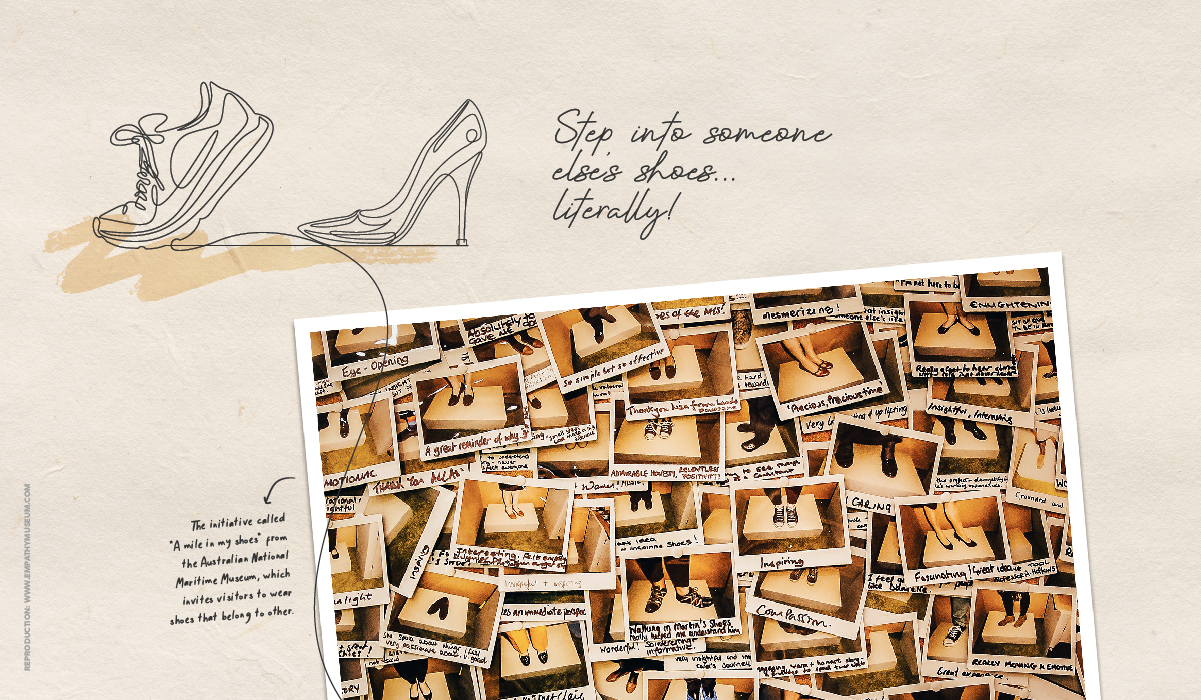
“Using the product myself was revealing. We have always focused on absorption, however I noticed opportunities to go beyond. These insights led to new innovative attributes for the product, which are currently being developed by our Engineering team. Today we are close to offering one more benefit to better meet our consumers’ needs”
Mônica Fernandes, CSI Adult Care Leader, Kimberly-Clark
B. Capture moments of life through films, audios and photographs
Films and photographs are powerful empathy devices. This thought led the Chinese artist Ai Wei Wei to create the film “Human Flow” to raise global awareness about the refugees crisis. Brands also make use of empathetic films to create impactful campaigns. “Thank you, Mom”, the most successful campaign in the history of P&G is really touching because it effectively puts spectators in the place of mothers, creating a strong sense of identification.
At CBA B+G, we have been running ethnographic surveys and online diaries about consumers’ journey, asking them to film moments of their lives using their mobile cameras. For one of the partners we work with, from a hitchhiking app, we used the methodology ‘fear accounts’, through which we kept in touch with the app users via WhatsApp during a week, asking them to send us an audio each time they got scared when using the service, telling us what happened and how they felt. This method allowed us to capture real and touching stories, spontaneously.
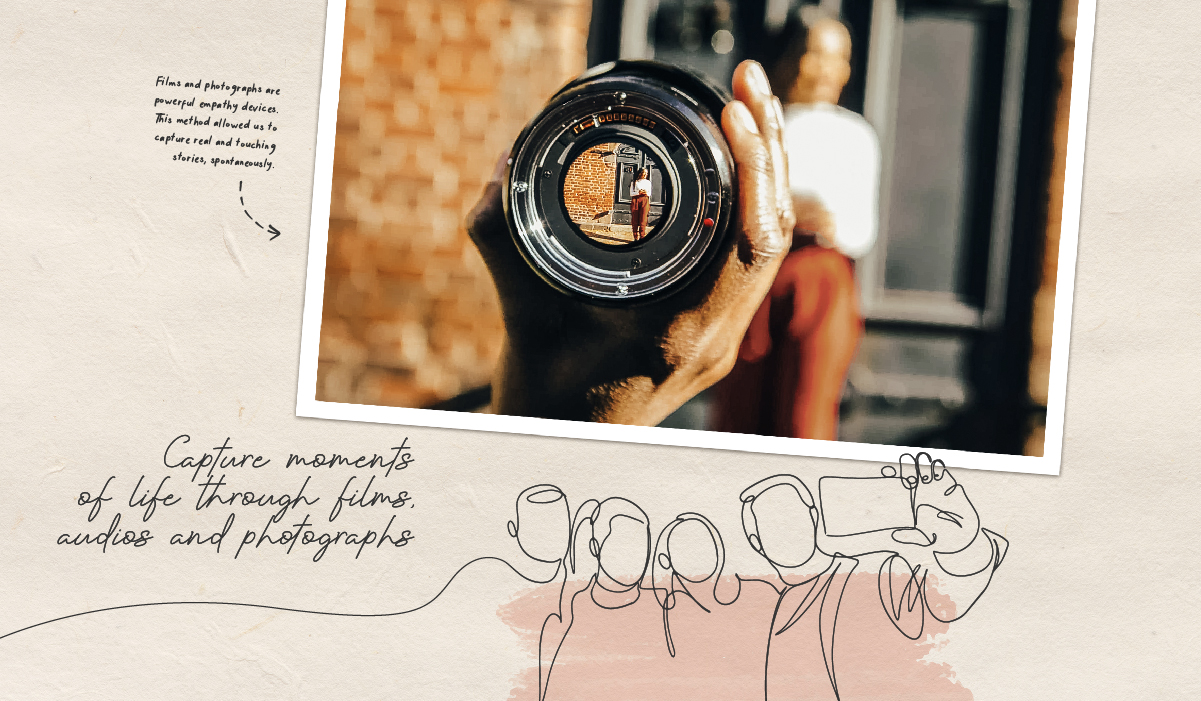
C. Immerse in someone else’s world with Virtual Reality (VR)
The VR technology uses a headset to place the spectator in a virtual environment with a 360 view, providing a more intimate and active immersion. For some people, technology is undoubtedly the best way to step into other people’s shoes. Technology has been used in games, science and arts, to recreate the way autistic people perceive the world, and as an invitation to reflect upon the effects of global warming.
At CBA B+G, we have devised for Nestlé a VR Project – Consumer Connections – to immerse in the lives of the target-consumers of three major brands of the company. One of the project’s expectations was to give everyone in the company – regardless of work department or position – the possibility to get to know the daily lives of people from different realities. The tool made it possible, for example, to follow a typical day in the life of Luiza, a teenager who lives in São Paulo and loves KitKat and skating. To Cibele Rodrigues, Research Manager, at CBA B+G, “the project was enriching and powerfully delightful. It refreshed the target, putting everyone on the same page. Moreover, we escaped the traditional reports, showing more humane journeys. At the end of the day, the figures made more sense, allowing executives to take more assertive decisions, closer to the consumer”.
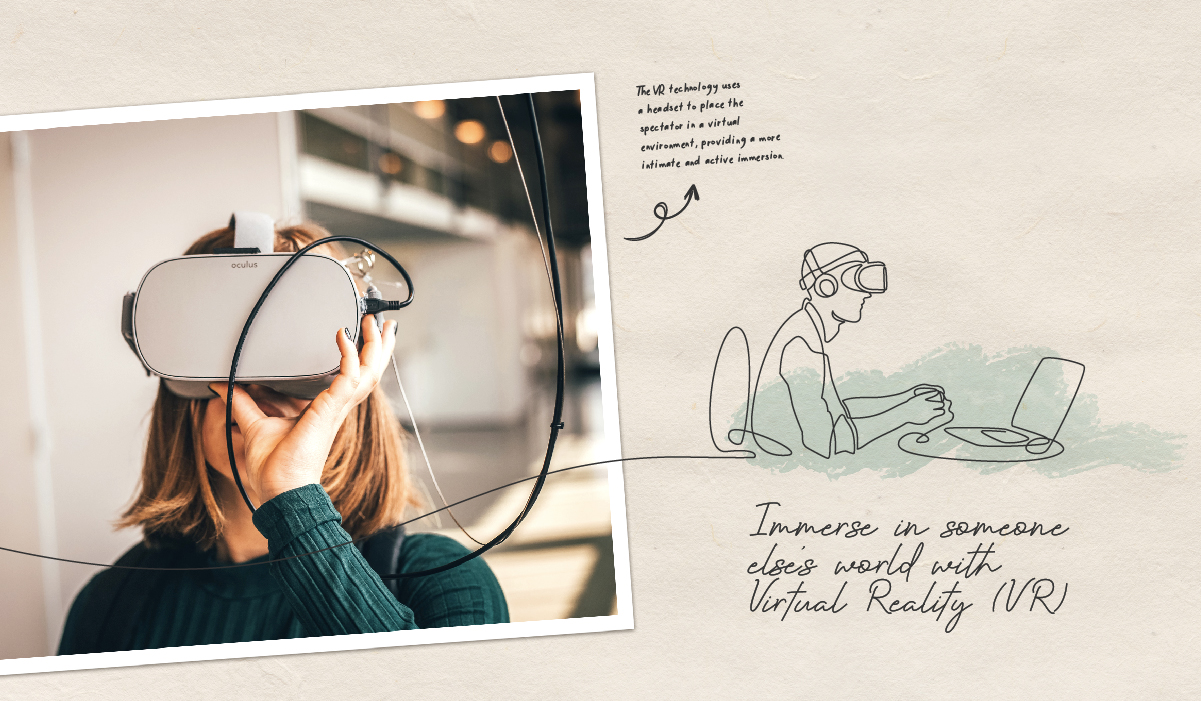
“The immersion project using VR was one of the most incredible we have ever experienced, which made us think ‘why haven’t we done that before?’ The possibility to follow parts of consumers’ life is the icing on the cake for any insight or marketing professional. The approach was fundamental to make us understand the best moments and ways to connect with them”.
Demer Santos, Consumer & Marketplace Insight Manager, Nestlé
D. Blend consumers with clients, breaking barriers
Who says we cannot mix consumers and clients, spectators and artists, experts and laypeople? Breaking these barriers is also a powerful way to connect people and develop empathy.
We introduce this concept during our processes, joining clients and consumers to work face-to-face, without one-way mirrors and with no condescension. Today, we do the same remotely. Alex Espinosa, CBA B+G’s managing partner and Head of Innovation, explains that the objective is to “create ecosystems where clients, consumers, mentors and experts co-create together with a common purpose, enabling a multi perspective view of the challenge and incorporating experiences that boost the developed solution”.
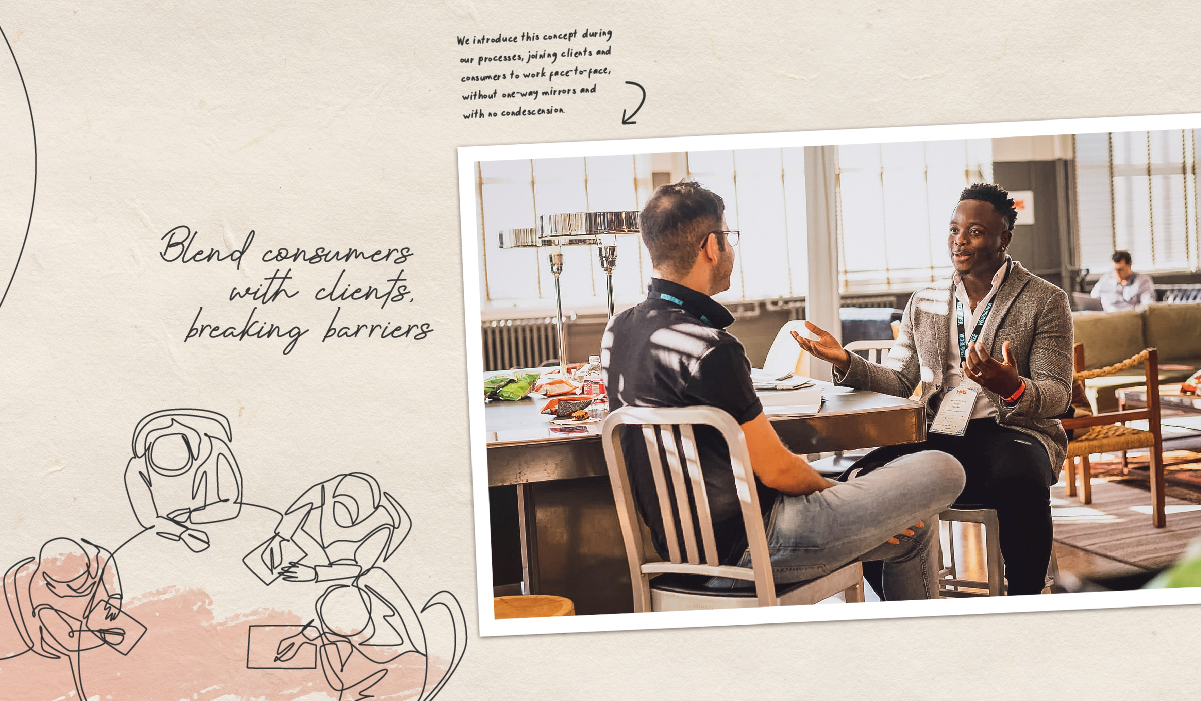
E. Join virtual with real, using Augmented Reality (AR)
AR has also been gaining space in our lives. This technology make it possible to mix elements from the virtual and real worlds with the advantage of being much more accessible, since it doesn’t require a headset and can be easily developed in an app. It has been largely used, both by entertainment games (who remembers the Pokémon Go fever?) as by brands that provide a product trial without the need to leave home. That’s the case of Ikea, that simulates how your sofa would look in your sitting room; or L’Oréal, that offers the possibility to virtually try on different lipstick colors before choosing one.
But how is augmented reality used in research and Innovation? We have recently developed, together with one of our business partners, an app that used AR in a disruptive way, to make a survey about absorbent pads products. Consumers were able to try different shapes and sizes of new products, simulating real use by projecting them in their panties or bikinis. To Alex Espinosa, “technology allows prototypes and products to reach millions of homes without the need of physically producing any of them, in real-time tests that result in products that better fit the target-consumer. It is the fastest and most effective way to validate your MVP (Minimum Viable Product) with consumers and find the added value and possible improvements within minutes”.
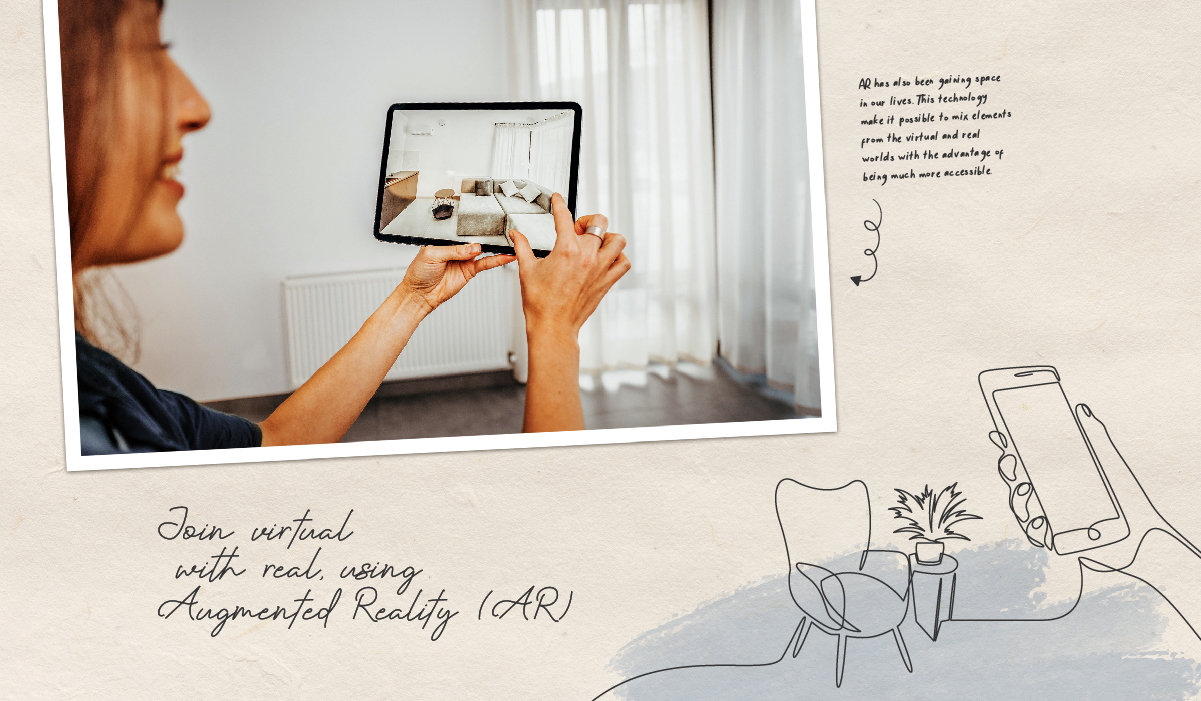
We may safely assume that extended reality will continue to evolve and improve to achieve astounding results. We bet on the use of Augmented Reality and other hybrid formats that explore the best of technology to project reality as perceived by others without disregarding human contact. Definitely, digital and analog realities are complementary in capturing insights more sensitively.
To delve into this issue of empathy and its tools more deeply, we recommend watching the TED talk by the Australian philosopher Roman Krznaric about how to start an empathy revolution, as well as the New Yorker’s beautiful immersive animated short-documentary film about detention camps in China. If you don’t have a VR headset or cardboard yet, it’s worth buying one and start playing with these new possibilities.
And of course, don’t hesitate to contact us to understand better how we can help your brand use these tools on your behalf. And if this topic inspires you and if you are or know someone who is a business professional, strategist or designer interested in joining our team, write to [email protected] telling us about your expectations, objectives and history. We are always looking for talent!
This article had the contribution of: Carmen Beer, Ana Cerqueira, Giuliana Sanchez, Thaísa Miyahara, Ana Paula Moreno, Alex Espinosa, Cibele Rodrigues, Demer Santos, Mônica Fernandes, Josy Lamenza, Daniela Irrazabal, Rosario Maglione, Renato Storni and Luis Bartolomei.